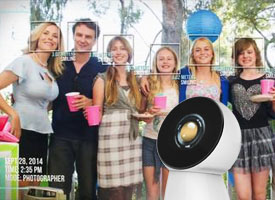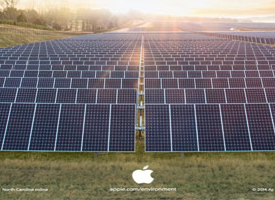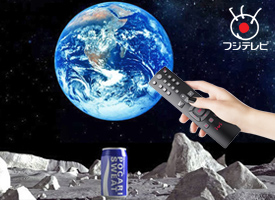 The Online Time Capsule
The Online Time Capsule
 Opening of the World's first robots theme park: "ROBOT LAND" in Incheon, South Korea
Opening of the World's first robots theme park: "ROBOT LAND" in Incheon, South Korea
In 2009, we heard that South Korea was working on some sort of massive robot theme park that was scheduled to open in 2012. And then, we kind of didn't hear anything for a very, very, very long time. Now that it's 2014, Robot Land is back in the news and apparently actually really seriously no kidding getting built. Yay!
After years bogged down in environmental reviews (there's a stream that probably had some sort of endangered microbe in it on the build site), Masan Robot Land officially broke ground right about here in December of last year. The first phase of construction will include a robot research and development center, a convention center, a robot exhibition hall, and (most importantly) robot theme parks.
This is all supposed to be finished by September 2016 (with the theme park opening first, in January of 2015), which seems optimistic based on how this project has gone so far. But, 700 billion won (over US $660 million) has been promised, and 89 percent of the required land (300 acres) has been purchased, so things are definitely happening now. And once phase one is complete, phase two will add a bunch of hotels and condos and stuff, to open in 2018.
The Robot Land theme park could include:
Visitors can build their own droids
Roller coasters, a big wheel, rides and a water park.
An aquarium showcasing mechanical fish.
A night club, interactive cinemas and show spaces.
Shops selling hi-tech robots.
An R&D centre where engineers can build the next generation of robots.
A graduate school to educate future robotics engineers.
Huge exhibition spaces.
Detailed info about the robot park: http://www.robotland.or.kr/
Also detailed article about: http://www.dailymail.co.uk/sciencetech/article-2549393/The-ROBOT-theme-park-South-Korea-plans-380m-attraction-visitors-build-droids-watch-mechanical-animals.html�����

 Apple's New Spaceship Campus 2 will be the greenest building on the planet
Apple's New Spaceship Campus 2 will be the greenest building on the planet
APPLE: Our new home will be green from the ground up. ---------------------------------------------------------------------------------------------------Like everything we build, our new Apple campus in Cupertino pushes the boundaries of technology — it will be the most energy‑efficient building of its kind. Powered by 100 percent renewable energy sources, the campus goes beyond showing respect for the environment to forming a partnership with it. Air flows freely between the inside and outside of the building, providing natural ventilation for 75 percent of the year. And sunlight powers one of the largest onsite corporate solar energy installations in the world.
Our new home will be green from the ground up. ---------------------------------------------------------------------------------------------------Like everything we build, our new Apple campus in Cupertino pushes the boundaries of technology — it will be the most energy‑efficient building of its kind. Powered by 100 percent renewable energy sources, the campus goes beyond showing respect for the environment to forming a partnership with it. Air flows freely between the inside and outside of the building, providing natural ventilation for 75 percent of the year. And sunlight powers one of the largest onsite corporate solar energy installations in the world. ---------------------------------------------------------------------------------------------------The building itself is just part of the story. Just under 80 percent of the site will be open space, populated by more than 7000 trees — including more than 6000 newly planted shade and fruit trees. Drought-tolerant plants will be used throughout the landscape to minimize water use. ---------------------------------------------------------------------------------------------------Getting to and from the new campus will be greener, too. We’re expanding our existing commute alternatives program by 20 percent. This means that over a third of our nearly 15,000 employees in Cupertino can commute to the new campus using our biofuel buses, public transit, bicycles, carpools, and their own two feet. And for drivers, we’ll have over 300 electric vehicle charging stations.The new campus is being built from the ground up to meet the highest environmental standards set by LEED, an internationally recognized green building rating system. When completed, Apple Campus 2 will be an ever‑present reminder of our commitment to sustainability and an example of what every corporate campus can be. Apple Campus 2 will use 30 percent less energy than a typical R&D office building. Over 1000 shared bicycles will be available at Apple Campus 2. ---------------------------------------------------------------------------------------------------Source: https://www.apple.com/environment/climate-change/��������

 HI-SEAS 4 Reveals How deep Space Missions can Maintain Morale on Prolonged Voyages
HI-SEAS 4 Reveals How deep Space Missions can Maintain Morale on Prolonged Voyages
Six people have begun a year-long mission to Mars without ever leaving Earth. Last week on the slopes of Mauna Loa volcano in Hawaii, the volunteers sealed themselves inside a dome habitat where they will live in isolation for one year on a simulated space mission. The fourth Hawaii Space Exploration Analog and Simulation (HI-SEAS 4) aims to study how deep space missions can maintain morale on prolonged voyages.
Funded by NASA and conducted by the University of Hawaii at Manoa and Cornell University, the HI-SEAS project began in 2013 as a cost-effective way of carrying out isolation experiments in the context of a simulated mission to the Red Planet. It uses a solar-powered dome 36 ft (11m) in diameter and 20 ft (6m) high designed to simulate a Mars habitat. This dome is situated 8,000 ft (2,400 m) up on the slopes of Mauna Loa on the island of Hawaii, which act as an analog of the Martian surface.
HI-SEAS 4 is the fourth and longest of the HI-SEAS missions , with prvious simulations only lasting four to eight months at a time. Its male/female crew consists of volunteers from France, Germany, and the United States and includes an MD, an architecture post-graduate student, a soil scientist, a space scientist, an astrobiologist, and a physicist.
Slated to last a full year, the purpose of the HI-SEAS 4 is to study how astronauts can maintain morale and continue to perform at an effective level not only in relative isolation from the rest of the human race, but also a small group in conditions of near-zero privacy. During the mission, the crew will eat freeze-dried foods to simulate astronaut diets and provide suggestions to improve menus for actual space crews, They are only allowed out of the dome while wearing simulated spacesuits for geological and microbial surveys.
"I’m looking forward to getting to act like an astronaut for a year, because I’ve wanted to be an astronaut for most of my life," says HI-SEAS crew member Andrzej Stewart. "I’m not a real astronaut yet but I’m getting closer and closer to that dream and this is a step in that direction."
Source: http://www.gizmag.com/�

 Full Public Release of JIBO - The World’s First Family Robot
Full Public Release of JIBO - The World’s First Family Robot
WHAT JIBO CAN DO: [See] Two hi-res cameras recognize and track faces, capture photos, and enable immersive video calling. ,๏, ,๏, ,๏, ,๏, ,๏, ,๏, ,๏, ,๏, ,๏, ,๏, ,๏, [Hear] 360° microphones and natural language processing let you talk to JIBO from anywhere in the room. ,๏, ,๏, ,๏, ,๏, ,๏, ,๏, ,๏, ,๏, ,๏, ,๏, ,๏,
[Speak] Hands-free reminders and messages, so you'll never forget and can always be in touch. ,๏, ,๏, ,๏, ,๏, ,๏, ,๏, ,๏, ,๏, ,๏, ,๏, ,๏,
[Learn] Artificial Intelligence algorithms learn your preferences to adapt and fit into your life. ,๏, ,๏, ,๏, ,๏, ,๏, ,๏, ,๏, ,๏, ,๏, ,๏, ,๏,
[Help] Like a personal assistant, JIBO proactively helps you, to make everyday tasks simpler and easier. ,๏, ,๏, ,๏, ,๏, ,๏, ,๏, ,๏, ,๏, ,๏, ,๏, ,๏, [Communicates] and expresses using natural social and emotive cues so you understand each other better. ,๏, ,๏, ,๏, ,๏, ,๏, ,๏, ,๏, ,๏, ,๏, ,๏, ,๏, JIBO'S SKILLS: [Assistant] Politely reminds you of important tasks and events to help you stay on top of things. ,๏, ,๏, ,๏, ,๏, ,๏, ,๏, ,๏, ,๏, ,๏, ,๏, ,๏, [Photographer] Uses natural cues like movement, speech, and smile detection to know when someone’s posing for a picture. ,๏, ,๏, ,๏, ,๏, ,๏, ,๏, ,๏, ,๏, ,๏, ,๏, ,๏, [Storyteller] Sound effects, graphics and physical movements make a responsive and interactive storytelling experience. ,๏, ,๏, ,๏, ,๏, ,๏, ,๏, ,๏, ,๏, ,๏, ,๏, ,๏, [Messenger] Recognizes you and each member of your household, to deliver the right messages to the right people at the right time & place. ,๏, ,๏, ,๏, ,๏, ,๏, ,๏, ,๏, ,๏, ,๏, ,๏, ,๏, [Avatar] See-and-track camera makes it easy to turn and look at people, to support video calling as if you are in the room. ,๏, ,๏, ,๏, ,๏, ,๏, ,๏, ,๏, ,๏, ,๏, ,๏, ,๏, [Companion] Physical presence with helpfulness and heart, JIBO will put a smile on your face and make you feel better. ,๏, ,๏, ,๏, ,๏, ,๏, ,๏, ,๏, ,๏, ,๏, ,๏, ,๏,
Source: http://www.myjibo.com/
���

 The world’s best whiskey Yamazaki Single Malt Sherry Cask 2013 returns from space with new trendy alien flavour
The world’s best whiskey Yamazaki Single Malt Sherry Cask 2013 returns from space with new trendy alien flavour
The lonely astronaut is about to get a companion.
The Japanese distillery company, Suntory, announced that it is partnering with the Japan Aerospace Exploration Agency and the International Space Station to launch its world-class whiskey into space.
Last year, Suntory dethroned the Scots for the title of the world’s best whiskey with its Yamazaki Single Malt Sherry Cask 2013. It marked the first time that a non-Scotch whisky was given the title by the highly-esteemed Jim Murray’s Whisky Bible. (For more on whisky vs. whiskey, see here.)
Alas, according to the press release, the point of the mission is not to provide astronauts with fine whiskey, but to test the way zero-gravity affects the ageing and taste of the liquor. “With the exception of some items like beer, alcoholic beverages are widely known to develop a mellow flavor when aged for a long time,” the company writes. Scientists and Suntory hope that the alcoholic space mission will help determine the source of this mellowing process.
The whiskey’s launch date is August 16, when it will fly aboard JAXA’s transfer vehicle Kounotori. A spokesman for the company told the Wall Street Journal that Suntory will be sending two different whiskies: a single malt aged for 21 years and another whiskey that was just distilled.
Half of the samples will return to Earth after one year while the other half will remain in space for an additional year. Suntory has not announced plans for the space whiskey’s future consumption.
Source: http://qz.com�
I will have quit smocking�������

 California Flats Solar Project starts delivering of 130MW clean power to Apple data centers
California Flats Solar Project starts delivering of 130MW clean power to Apple data centers
Apple continues to aggressively adopt solar to power its data centers. On Tuesday, Apple CEO Tim Cook announced that the company plans to spend $850 million to purchase energy from a solar panel farm that is being built by First Solar in Monterey, California.
The companies called the deal the largest ever to supply clean power to a commercial user. The deal is structured as a power purchase agreement (or PPA) over 25 years, which means that Apple has agreed to buy the solar power at a fixed low rate over 25 years. At the Goldman Sachs Tech and Internet Conference, where Apple made the announcement, Cook said the deal “makes business sense” for Apple.
The solar farm, called the California Flats Solar Project, will be built by solar giant First Solar on 2,900 acres, and it will have enough capacity for 280 MW. The site will use First Solar’s solar panels.
Apple will buy the power from 130 MW, and in a separate deal PG&E will buy the solar power from 150 MW. The amount of power that Apple is buying is the equivalent to power 60,000 average California homes.
Having a company, like Apple, or a utility, like PG&E, lined up to buy the power from a solar farm is an important part of getting the solar farm built. So the fact that Apple entered into the PPA with First Solar, helped First Solar get the project ready for construction.
Construction will start on the California Flats Solar Project in mid-2015 and is supposed to be finished by the end of 2016. First Solar said that the Monterey County Planning Commission has approved the project, but now it needs to be approved by the Monterey County Board of Supervisors.
Cook said that the amount of solar that Apple is purchasing from the farm will be enough to provide clean power for its new campus in California, all of its other offices, all 52 retail stores in California, and its data center in the state.
Before Cook made the announcement he noted that “We know at Apple that climate change is real, and our view is the time for talk has past. The time for action is now.”
Apple has committed to use 100 percent clean energy, and over the past few years has been implementing that goal by building and financing solar farms, among other methods. At the end of 2013 I took an in-depth dive into Apple’s clean energy strategy.
Apple has built solar farms in North Carolina, one outside of Reno, Nevada, and will also use solar to power a command center data center in Arizona, announced last week. The Arizona solar farms will be built in partnership with local utility Salt River Project, and will provide 70 MW of solar power for Apple, which is enough solar energy for 14,500 Arizonan homes.
Source: https://gigaom.com/�
I will be maried to my SO ������

 Otsuka’s POCARI SWEAT erects the First Advertisement On The Moon
Otsuka’s POCARI SWEAT erects the First Advertisement On The Moon
So Just imagine yourself taking a late night stroll, star gazing or even just staring out your window in the midst of a deadline, usually you’d find the moon looking right back at you. The moon is usually the centre of many folklores and myths where the earth’s only natural satellite is the source of power for all things supernatural and unnatural.
Yes, the moon is commonly a symbol of the mystic and all things romantic, it’s glow allows all the wistful sky gazers a sense of security and often a subject of wooing love songs.
Otsuka of Pocari Sweat, a Japanese beverage, hopes to send millions of children’s dreams to the moon. Well technically not by sticking their logo across the moon’s face (how romantic would that be?) but a special cannister designed to be sent to the moon containing Pocari Sweat Powder.
This will be the first advertisement of it’s kind to reach outside our planet. This private moon-landing will hopefully inspire more people to become astronauts and to take their first steps for man-kind across the moon and indulge on the powder. It’s a rather drastic way of advertising a product if I do say so myself, and a frightening prospect to just how far man-kind would do to commercialize their products, as if cleaning up debris in space wasn’t hard enough.
The Falcon 9 rocket will take four and a half days to reach our orbiting natural satellite, launching in 2015. The Falcon 9 is specially designed for reusable space travel having already travelled to the international space station for a supply run.
The cannister will then be placed on the ‘lake of death’, a region on the moon, to represent how precious the water is to us earthlings.
Atrobotic Technology‘s deal with Otsuka will provide them with the means of landing and the technology to make this dream to come true. Their Astrobic Technology’s ‘Griffin Lander’ can deliver loads weighing up to 260 kg and will be making Pocari’s first ever moon-landing. Atsrobotic Technology is no stranger to space travel, being the first company to create a device and successfully land on the moon and travel 500 meters to transmit pictures back to Earth.
Otsuka dreams of utilizing this opportunity to drive young people to reach for the moon and fulfill their dreams.
Which makes me think, what if something else reaches the capsules first? Do we really know what’s on the dark side of the moon? Do Extraterrestrials even sweat?
Well that was my train of thought, what are yours?
On December 17 2014 TOKYO-LUNAR DREAM Executive Committee, which is constructed from Otsuka Pharmaceutical Co., Ltd., Global Space Industry Company ASTROSCALE PTE. LTD. (Singapore), Space Development Company Astrobotic Technology, Inc (U.S.) has announced to reschedule the launch date of “LUNAR DREAM CAPSULE PROJECT” (LUNAR PROJECT) from October 2015 to second-half of 2016, with the target goal of summer 2016, due to the finding of the possibility of a more safety secured technology to be loaded. With this new technology the performance of engine for the unmanned space ship (Lander) loaded with the Dream Capsule, will be upgraded and more precise landing on the moon will be possible. With the rescheduling the date of launch, the messages will be gathered for a longer time.
So with the launch date held back more and more people are given the opportunity to send their hopes and dreams to the moon, or you could take this chance to send a message to that decepticon hiding on the other side of the moon.
Source: http://rootnotion.co.uk/��������������

 Star Trek 3 Will Warp Drive to an Universe Where No Star Trek Story Has Gone Before
Star Trek 3 Will Warp Drive to an Universe Where No Star Trek Story Has Gone Before
The last time we got a Star Trek movie, it turned out to basically be a less-than-stellar, rather nonsensical remake of one of sci-fi's greatest blockbusters. Fortunately, it doesn't appear as though fans will have to go through the re-do treatment again with Star Trek 3, as director Justin Lin has promised not only an original story, but also brand new worlds and alien species.
Deadline caught up with the filmmaker as he imprinted his hands into a wet concrete slab in front of the TCL Chinese Theater in Hollywood, and it was during their chat that Lin revealed his plans to take the next movie in the legendary franchise to some brand new places. Discussing the approach to the project, the director first jokingly noted that Simon Pegg will not be in every scene of the film (referencing the fact that the actor is writing the screenplay), but then added that he doesn't plan to adapt a classic story we've already see. Said Lin,
It’s all new and fresh. The Klingons, Romulans and other species are great, but it’s time to go further. It has been fun to focus on creating whole new worlds and species.
Unlike the last two J.J. Abrams-directed Star Trek films - which spent quite a bit of time on Earth - the upcoming Star Trek 3 will find the crew of the Enterprise finally on their five year mission through space. Because of the alternate timeline nature of the rebooted series, it would be rather easy for the production to just borrow from one of the franchise's classic stories, so it's refreshing that the film won't be going in that direction again. Of course, the news takes on a different color when you consider the fact that the sequel has actively been removing its Star Trek-y-ness.
Star Trek 3 - which is said to have the title Star Trek Beyond - is expected to start production soon, which is causing a bit of a time crunch behind the scenes as the script is being put into workable shape. Even if the screenplay doesn't make the deadline, however, it's unlikely that the project will get delayed. This is because 2016 marks the 50th anniversary of the Star Trek franchise, and it's incredibly hard to imagine that Paramount Pictures won't try to exploit that fact as much as they possibly can. As such, we can expect Star Trek 3 to head into production in the next few weeks as planned.
The sequel is expected to bring back Chris Pine, Zachary Quinto, Karl Urban, Zoe Saldana, Anton Yelchin, Simon Pegg, and John Cho as the crew of the Enterprise, and there have also been reports linking Idris Elba and Kingsman's Sofia Boutella to the project. Look for it in theaters on July 8, 2016.
Source: http://www.cinemablend.com
Predictions: The title “Beyond” suggests that deep space will be explored and that the Enterprise will really be going where no people have gone before. This is great and could lead to all sorts of awesome science fiction stuff. Maybe there will be a planet that’s alive and eats other planets. Or an area of space where all alternate timelines become visible. Or Sisko singing with Vic Fontaine on an asteroid somewhere! (What? The Prophets span all of time, don’t they?) Whatever the crew encounters, it will be more interesting than yet another “madman blows up the Federation” plot.
Star Trek Beyond is set to come out on July 8, 2016, the year of the show’s 50th anniversary. Simon Pegg has already mentioned there will be some kind of tribute to the passing of Leonard Nimoy, but might we have a Shatner cameo, too? And why stop with the Shat? I’ve been hoping for Q to show up in these movies for ages (like he did in the IDW comics) or hey, I’d even settle for Trelane. It would be great to see Nichelle Nichols, Walter Koenig, and of course, George Takei, but these cameos don’t need to be limited just to classic Trek actors. Let’s get Patrick Stewart in there! And if he won’t do it, we’ll totally settle for Jonathan Frakes, if only because a bare-chested fight between Chris Pine’s Kirk and Riker is something we should have already been given.���������������